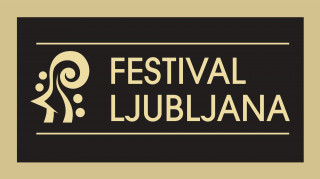Important information
Academy-trained sculptor Zmago Posega (Postojna, 1959–Šempeter pri Gorici, 2009) appeared on the art scene in Slovenia together with the rest of Generation 82 in the 1980s, a time when numerous artistic explorations were gathering pace and the prevailing opinion was that the style, symbol and structure – and also the modes of art – developed by the art of minimalism and conceptualism no longer made sense. That object and concept were key and that the end was nigh for modernist painting and figural sculpture. There was also a strong expectation of a continuation of the modernist paradigm, even though this was the time of postmodernism – something that critics and theorists defined and understood in very different ways, as did the painters who were Posega’s contemporaries, so the sculptor, blessed with a remarkable gift for feeling forms and volumes decided, right at the outset of his creative career, to follow his own instincts. His heart, his inner ambitions and his deepest desires. To follow his own path, equipped with all the knowledge he had gathered through years of schooling, and like “a dreamer whose dream got into his hands”, to borrow Rilke’s lyrical description of Rodin, realise his own visions, dreams and goals in a way that would be his alone. In harmony with his own internal search. In an environment that spoke to him and stimulated him. That is why he was happy to return home to the Goriška region once he had completed his education and, far from the pressures of the latest fashionable artistic quests, spent most of his time working without pressure and in peace in his own studio in Bilje. In a Goriška village that had been defined, ever since Roman times, by clay, which also became his favourite material for sculpting, since he had been working it ever since he was a child. In it, he expressed his first artistic ideas and realised that he had a gift. Many years later, just a few months before his premature death, he said of clay: “When embarking on new themes and ideas, I usually model them first in clay or ceramic, the material from which I shape and seek a means of expression, and then later give the newly created forms a final definition in stone or bronze.” Clay was his first material and perhaps also the one that bound him closest to itself, although he was equally sensitive and respectful towards other materials seen as traditionally “sculptural”, particularly stone and metal. It was precisely this connection and commitment to the traditional materials of sculpture that drew him to the material sculptural mass and the mastery of space in the broader and narrower senses of the word, and also to the figure and the fragment. To that sculptural way of seeing that reveals sculpture as a dialogue between artist and material, that breathes into it the life of new, living forms, full of associations, allusions, addresses. That by retreating from the rational, and also from the pure, abstract form, first addresses the figure, the human back, a fragment, and then a detail in countless visions.
Posega’s creative journey was special in many ways, since sculpture, as he saw it, demanded a great deal from him. Not only a suitable space, clay, stone, metal, wood and other traditional materials, but above all deep reflection, a clear vision and conception, an unerring sense for dimensions, volume and statics, surface and space; for the true and correct grip, touch and intervention of the hand, which with physical strength adds or takes away, smooths or cuts. Models. Composes. The roots of this journey can perhaps be found in Rodin’s famous definition of sculpture as the art of the hump and the hollow, as the art of forms in an interplay of light and shadow – words pronounced in the late nineteenth century that still had vivid significance in the 1980s, although in Posega’s case it seems that what spoke to him above all was people, and the nature and environment that offered him clay and stone. Various types of stone that encouraged both form and content, both haptic and visual effects and anthropomorphism and abstraction.
Zmago Posega was a sculptor, yet in his search for sculptural visions and messages he often turned very willingly to drawing, which became an important means of expression for him in the creative process. He did not only express himself in drawing, but also in a number of other painting techniques such as gouache, watercolours and pastels, in the exploratory tradition of the generation to which he belonged, and created an oeuvre that we might define as a search for the inner pulsions in two-dimensional expression, since as he said himself in 1998, sculpture was for him “only a part of the overall artistic space, while drawing is actually a kind of starting point with which you begin to think about sculpture. I do not mean to say, however, that every sculpture begins with a drawing; sometimes they are entirely independent and live their own life.”
He was already drawing attention to himself through his evocative sculptural language while a student at the Academy of Fine Arts in Ljubljana, where he developed as a sculptor, designer and artist under the aegis of remarkable sculptors and teachers – Dušan and Drago Tršar and Slavko Tihec – who were capable of drawing the best out of their students in both the human and the artistic sense, inspiring in them an interest in and love for traditional materials, forms and messages and at the same time persuading them to capture and hold in their creations their own inner, primary desire. Their sculptural vision. Their own sculptural statement, eloquent and heartfelt. Based on tradition and the innovativeness of the moment in which it is created. Posega’s sculpture is recognisably original and remains, as Brane Kovič puts it, “part of the modernist paradigm, an example of its continuity in a period to which the label of postmodernism had been applied…”
Zmago Posega was not satisfied with a statement that was attractive merely by virtue of its form, its expressive or monumental dimensions. Instead he embarked, with great sensitivity, on an exploration of the treatment of material and a search for a distinctive recognition, understanding and feeling of the artistic. Of the vital, the communicative. Captured in the beauty and expressiveness of the material, and also of space, surface and light, and above all its own inner speech. He created a series of small sculptures (Untitled, welded iron, 1990; Untitled, bronze, 1992; Untitled, fired clay, 1992; Untitled, marble, 1993), that reflect his specific artistic and sculptural approach, but also a series of public works, both commemorative sculpture, for the most part portrait busts (bust of Anton Rutar, bronze, 2003, Nova Gorica; bust of Simon Gregorčič, bronze, 2006, Gradišče nad Prvačino) but also a full-length figure (Vinko Vodopivec monument, bronze, 1992, Kromberk near Nova Gorica), and ambient sculpture, that also retain monumental dimensions (Sculpture from Forma Viva for Slovenia’s Roads Bled ’96, stone, Barje pri Ljubljani; Figure in a Circle, stone, 1998, Nova Gorica).
He worked in cycles and typically did not date his small and medium-sized works, which means that their date of creation is often defined above all by the sculptural approaches that recognisably impacted his mode of thinking and creating in a given period. Even so, it is worth underlining that he was initially fascinated by the human back, tense and arching, alive and erotic, so soft in its solid composition that it took on an existence as a complete and independent form. This was later followed by a profound statement in the form of various circular abstract compositions, like metaphors of the cycle of life-and-death, present and past, that speak through the aesthetics of derived forms and the hapticity of the surface. Both stone and bronze. A visible caesura in his sculptural work may be observed in the late 1980s, when he no longer relied so heavily on symbolic starting points, when he no longer sought only within the traditional language of sculpture defined by the modelling and treatment of volume, but instead focused on creating a pure, abstract form and turned to the expressive and technological possibilities offered by sheet metal and wood. Later on, he applied his new discoveries in a convincing manner to stone and bronze. Notable in this period are an eloquent suggestibility and subtlety reinforced by the interaction and responsivity of individual elements, although always with recognisable traces in the anthropomorphic tradition, so all-encompassing throughout his oeuvre, both in sculpture and drawing. We perceive his interest in both the visual and the haptic effect, that carry in themselves the originality of the artistic message. An insight into these sincere explorations is also provided by the selection of sculptures by his daughter Nana Posega and Nataša Benčič, a selection that touches and is forever written in the hearts of all who love sculpture and the profundity of a message captured in traditional sculptural material. In this selection, above all in stone and bronze.
Dr Nelida Nemec


